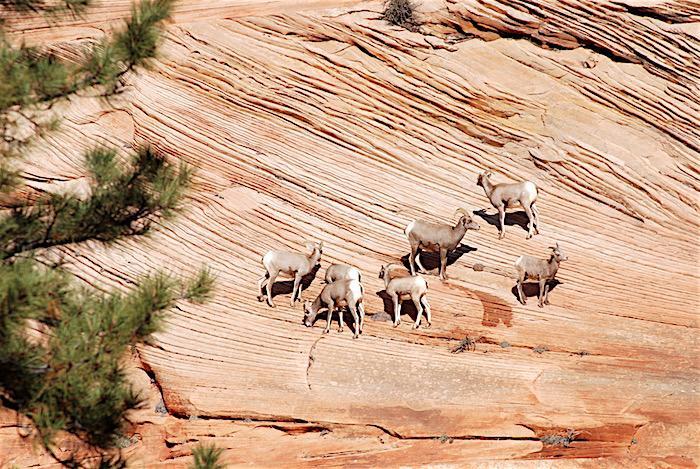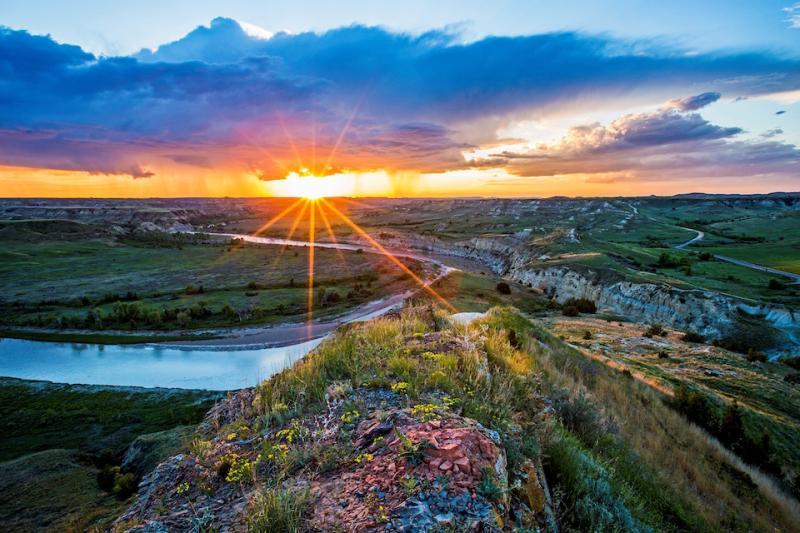
The beaches of Olympic National Park are a great place to avoid crowds...and coronavirus/Rebecca Latson file
Unless the National Park Service moves to control or shut off visitation to the National Park System, there are plenty of ways to enjoy the parks without greatly increasing your odds of catching COVID-19.
Many of the strategies you should employ are the ones you normally should consider whenever you head to the parks. After all, with some parks heavily crowded during peak seasons, you should have a good plan for avoiding those crowds.
What follows are some suggestions to consider anytime you head to the parks, let alone during the current COVID-19 epidemic. Just be sure to check a park's website for latest trail and road conditions before heading out so you're not surprised by closures.
Avoid Crowd Magnets
This is good advice any time you head to a park. For instance, at Yellowstone National Park the Old Faithful Geyser attracts hundreds of viewers along the boardwalk on the west side of the geyser. You could still enjoy the whoosh of steam and hot water by going to the trail near the east side, or viewing it from the trails on Geyser Hill. Of course, the roads to Old Faithful aren't scheduled to open until mid-April.
Visitor centers are definitely crowd magnets. Think of the Byrd Visitor Center in Shenandoah National Park, Sugarlands Visitor Center at Great Smoky Mountains National Park, the Valley Visitor Center at Yosemite National Park, the Grand Canyon Visitor Center on that park's South Rim, or the Hurricane Ridge Visitor Center in Olympic National Park. You can find yourself squeezing past others in aisles during busy times; no way to keep 6 feet apart, as the Centers for Disease Control recommends.
Though it's nice to stop in these facilities and peruse their collections of interpretive materials, watch the park video, or simply stamp your Passport To Your National Parks®, skip this stop and instead head to a hiking trail or scenic overlook and circle back during the dinner hour when the center might be less crowded.

Checkerboard Mesa in Zion National Park is a good spot to spy desert bighorn sheep/Kurt Repanshek file
Zion Canyon is most definitely the magnet for Zion National Park in Utah, but you can still find the park highly enjoyable and scenic if you instead head to the Kolob Canyons entrance, cruise down the Kolob Terrace Road, or explore Checkerboard Mesa on the eastern side of the park.
At Shenandoah National Park in Virginia, avoid the hike to Old Rag or to Whiteoak Falls. Instead, consider the Pass Mountain Trail at Milepost 31.6 on Skyline Drive. This 3.4-mile trail weaves through the forest and leads you to a hut. With spring progressing, it soon could offer some nice wildflower blooms and bird-watching opportunities.
Skip Yosemite National Park and instead head a bit south to Kings Canyon and Sequoia national parks. Enjoy the fresh air in these stunning parks while stretching your legs with a hike. Consider the Grant Tree Trail in Kings Canyon, or visit the Red Mountain Grove of sequoias. According to park staff this grove, in the Grant Grove area of Kings Canyon, can offer a kaleidoscopic burst of wildflowers along the ridge trail and near Redwood Creek.
The Muir Grove in Sequoia, two miles in from the Generals Highway, is reportedly one of the lesser-visited groves in the park, no doubt because of the hike involved.
"The Muir Grove features a high density of mature sequoias as well as a dramatic approach and entrance to the grove, with views across a creek gorge of the impressive giant sequoias on the grove's east side. The trail to this grove continues further into the grove for those who want a longer hike," the park's website notes. The trailhead is in the Dorst Campground.
Save the hike to Delicate Arch in Arches National Park for another time and head down to the Needles District of Canyonlands National Park and the Chesler Park Trail, or head to the Horseshoe Canyon Annex of Canyonlands and hike down to the Great Gallery. You won't be disappointed.
Visit Lesser Known Parks
This is a longstanding recommendation. With 419 units in the park system, there are so many options and opportunities to take advantage of. And many parks have few or no central gathering places where you might encounter crowds. Some possibilities:
Petrified Forest National Park in Arizona.
This is truly a jewel, with only one road running through it and a number of trailheads and overlooks where you can park and head out into a landscape bejeweled with multicolored petrified wood. Skip the visitor centers at either end of the road and enjoy this incredible setting.
Wind Cave National Park in South Dakota.
This relatively small (barely 34,000 acres) park features a loop road that circles the park and which you can drive in half a day or less, depending on how often you stop to take a hike or gaze at the park's bison herds.
Cape Hatteras National Seashore in North Carolina.
True, this is a widely known and popular park, but you can park your car and walk for miles along the beach without being surrounded by crowds. The same can be said for Cape Lookout National Seashore just to the south, but you do need to take a ferry to its barrier islands that offer incredible solitude.

Sunsets at Theodore Roosevelt National Park can be breathtaking/NPS
Theodore Roosevelt National Park in North Dakota.
Theodore Roosevelt no doubt would be disappointed that so few people visit his namesake park (691,658 in 2019), but that lack of crowds is to your benefit. Head first to the North Unit and the Riverbend Overlook. From there you can hike over to the Oxbow Overlook. Or you could park at the Oxbow Overlook and hike down to Sperati Point, a 2.4-mile roundtrip. Again, be sure to check park conditions before heading out.
Tallgrass Prairie National Preserve in Kansas.
The official visitation tally for this unit in 2019 was just 33,750, so you can be sure of some personal space during a visit to this not quite 11,000-acre unit. Not only will you find one of the last stands of the country's tallgrass prairie here, but there's also a herd of bison.
Petersburg National Battlefield in Virginia.
This rich-in-history battlefield provided some background for the Cold Mountain novel, and you can easily visit the inspiring setting today (though the crater created by the explosion isn't as raw and exposed as it was on July 30, 1864.The blast created a crater 170 feet long, 60-80 feet wide, and about 30 feet deep, killing 250-300 Confederates in the process). Stroll the grounds and you can spot earthworks created by Confederate troops and various spots were key points of the Petersburg siege played out.
Things To Keep In Mind On Your Travels
Most places in the National Park System are not sprawling across big, open, Western lands where it's easy to avoid other visitors. Many, many parks have close visitor situations: the monuments in Washington, D.C., Gateway Arch National Park in St. Louis, the Statue of Liberty, Independence National Historical Park, various boat transportation systems, forts, historic home tours, etc. Plus, even the big parks have crowded visitor centers, restrooms with lots of visitors who cannot be disinfected regularly (not enough staff for that) shuttle systems, etc. In other words, parks are not necessarily places where social distancing (remaining out of congregate settings, avoiding mass gatherings, and maintaining distance of approximately 6 feet, according to the Centers for Disease Control) from others when possible is easy.
Prepare yourself for some of these settings with hand sanitizer (if you can find some) and wipes (ditto). You could even make your own sanitizer if you can't find any (and if you can find the ingredients, which also seem to be proving popular). To do so, according to a story on CBS News, you need:
* 2/3 cup of rubbing alcohol
* 1/3 cup aloe vera gel
* Mixing bowl
* Container of some sort
Combine those ingredients, add 5-10 drops of essential oil to override the smell of alcohol, and you should be good to go. Key is that your product contain 60 percent alcohol by volume, according to the CBS story.
Envision The Parks At Home
If you can't head out to the parks, you still can enjoy them. Pull out Ken Burns and Dayton Duncan's documentary on the parks (The National Parks: America's Best Idea), or grab a book on parks; there are many very fine ones out there.
The Grand Canyon: Between River And Rim
Granite And Grace: Seeking The Heart Of Yosemite
Birds Of The West: An Artist's Guide
Civil War Places: Seeing The Conflict Through The Eyes Of Its Leading Historians
Ramble On: A History Of Hiking
You can find many more in our Fireside Reads section.
As conditions dictate, the Traveler will continue covering the coronavirus epidemic and the parks, so check back regularly.

 Support Essential Coverage of Essential Places
Support Essential Coverage of Essential Places







Comments
Good article Kurt but for the love of God I hope we see some leadership out of Washington (I know - fat chance these days) and that the parks are closed. Having just watch the usual round of Sunday morning news programs every single expert, including Dr. Fauci - the nation's tope infectious disease expert is almost begging people to stay home. Schools have closed, public offices have closed, churches have stopped services, major league sports have shut down - and yet the message from the National Park Service seems to be come on out and enjoy your parks. In the numerous other threads on Traveler about coronavirus there are impassioned pleas about how people need the outdoors and need to breathe fresh air etc. - perhaps it's time for people to discover the rich tapestry of public lands that are not managed by the NPS if they simply can't make a sacrifice themselves and try to limit the spread of this thing.
I agree partly, but like the article said, there are parks that don't get the crowds. If they need to close parks, let it be the crowded ones, not just close the whole system. That said, there are indeed plenty of areas in the wilderness that provide more social distance than anyone could want, especially if you have good snow shoes (it's still early spring).
The parks should be closed.
This is a failure to understand the whole picture. It's not just about protecting yourself. Traveling to a park requires gas, supplies, lodging, food, water, etc.... if you have an emergency unrelated to Coronavirus (you break an ankle, get bit by a snake, get lost on a trail, you use resources desperately needed to fight Coronavirus. Most crowdless parka are remote. They have very limited medical facilities that need to be available to people contracting the virus.
Just stay home. It's a few weeks.
Nice tell everyone how to overrun places that are still not too busy. Your gonna ruin the still quite places
I was planning on an extensive backpacking trip into Death Valley and Joshua Tree. But shopping for the trip places us at risk! any suggestion?
I for one am grateful that there are a few places to go still (outside) where we can feel some normalcy in these panic stricken times. That's what the parks have always been good for- just use our heads, practice social distancing and wash hands frequently. But the parks being open are good for our mental health as there is not much else we can do.
This is a terrible article. What about the communities of people that surround the parks. Stay home. Shame on you.